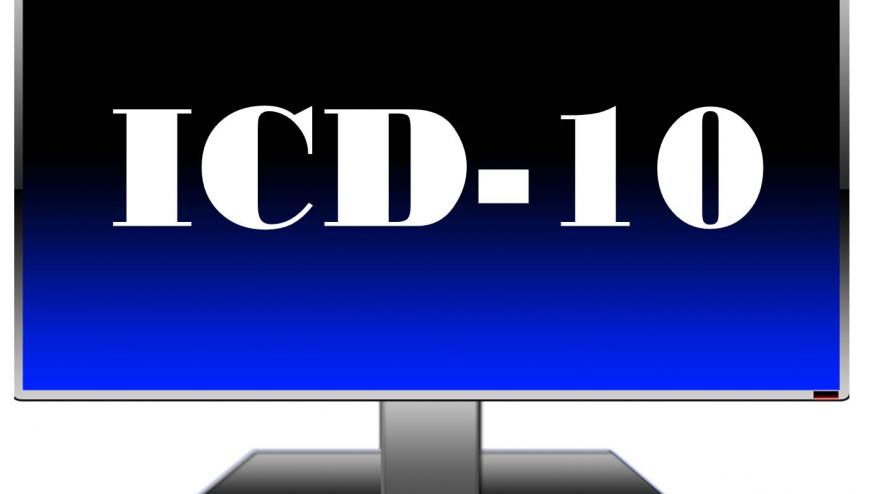ICD-10: Preparing for the Next Y2K Save

ICD-10 starts tomorrow, October 1st. Your Coding memory will have to increase 5-fold or more as we go from 16,000 to 68,000 new ICD-10 codes. How this will affect each of us remains to be seen. There’s a lot to learn, and many wonder if this will be the next “Y2K”. While that was much ado about nothing, this has significant reimbursement implications.
The good news is reviewers are going to be lenient during the opening year of ICD-10. The Centers for Medicare and Medicaid Services in July announced that it would provide a one-year grace period in which physicians will be able to submit ICD-10 codes to Medicare contractors without the required degree of specificity. However, this grace period for professionals applies only to traditional Medicare, not to Medicare Advantage plans. Humana, a national insurer that has a lot of Medicare Advantage business, intends to follow CMS' example, consultants say. But other big health insurers have said they expect specific ICD-10 codes on claims from day one.
Nonetheless, most of us will get there without pain, bloodshed or medication. Here are some more tips to help make the transition.
- It’s important that your documentation support the coding. Many rheumatologic diagnoses include laterality, anatomical specificity, and causation. Be sure to document the relationship between two conditions using language such as ‘due to,’ ‘exacerbated by,’ ‘with,’ or ‘in.’ This helps demonstrate patient severity, and it also allows coders to assign the most specific code. Payers may automatically deny codes that are unspecified.
- As with all specialties, rheumatology practices should ensure any encounter forms are updated to include details necessary for ICD-10. Include the conditions with which patients are most frequently diagnosed. Consider omitting unspecified codes from the encounter form to leave more space for additional diagnoses. Can you include documentation prompts to encourage physicians to document laterality rather than include separate codes for this information? The potential complexity of doing this all on paper is a good reason to consider upgrading to an EHR if you have not already, and more specifically an integrated EHR and billing system that enables you to send a complete electronic super bill.
- Whether using paper or EHR, you may want to keep a code cheat sheet handy. For example, the American College of Rheumatology and Janssen Biotech, Inc. provide quick reference crosswalks for rheumatology (see end of article).
- Do an analysis of your top codes using your practice management software or EHR and do a code mapping from ICD-9 to ICD-10 to reflect exactly the top codes for your practice. Just another way to get prepared and have resources handy to help make the transition easier.
ICD-10 Tips for Rheumatology Practices from the Rheumatology Network
Important Steps to Take:
- Contact the American College of Rheumatology to obtain a comprehensive list of diagnoses relevant to rheumatology practices and their corresponding ICD-9 vs. ICD-10 codes. Your practice management and EHR software vendors may also offer top codes reports, coding crosswalks (converters) and other helpful tools, and CMS provides several specialty-specific resources. Examine the ICD-10 code titles and descriptions to determine which codes require more detailed information.
- Perform a documentation audit to determine whether current documentation includes these details.
- Work with your EHR vendor to update templates to accommodate details necessary for ICD-10.
- Update paper or electronic encounter forms and super bills to include details necessary for ICD-10.
Tips to Ensure Compliance – Common Mistakes
- Distinguish between drug-induced lupus and lupus with organ or system involvement. If drug-induced, be sure to document the specific drug. Be sure to document if another organ or system is involved, also document that organ or system (e.g., lung, endocarditis, glomerular disease).
- Specify type, anatomic location and laterality for gout. Types of gout include idiopathic, lead-induced, drug-induced, due to renal impairment or secondary.
- Document the specific anatomical location and laterality for all cases of rheumatoid arthritis.
- Watch for other conditions that have expanded in ICD-10, such as psoriatic arthritis and ankylosing spondylitis. These diagnoses, as well as many others, expanded from one code in ICD-9 to multiple codes in ICD-10 due to greater anatomical specificity and laterality.
- Beware of combination codes. These codes capture a diagnosis as well as an underlying condition or complication. For example, ICD-10 code M32.11 denotes endocarditis in systemic lupus erythematosus. ICD-10 code M05.412 denotes rheumatoid myopathy with rheumatoid arthritis of the left shoulder.
USEFUL RESOURCES
American College of Rheumatology ICD-10 Crosswalk
Very detailed Rheumatology ICD-10 codes from Janssen
9 Page ICD-10 Coding Tip Sheet (PDF) from Blue Cross Blue Shield
Online lecture (pdf format) “ICD-10 for Rheumatology” from UConn Healthcare and Dr. Frank Turner










If you are a health practitioner, you may Login/Register to comment.
Due to the nature of these comment forums, only health practitioners are allowed to comment at this time.